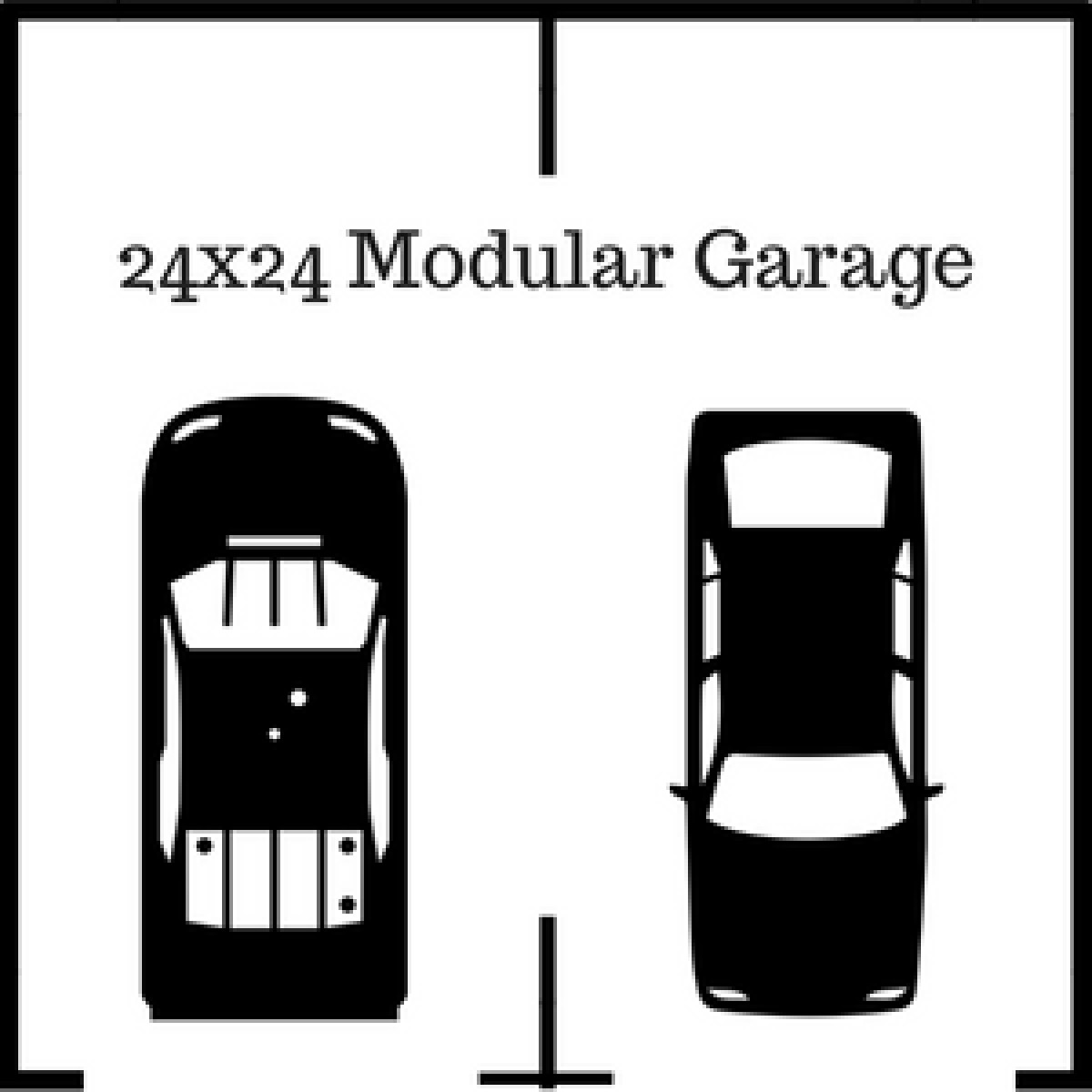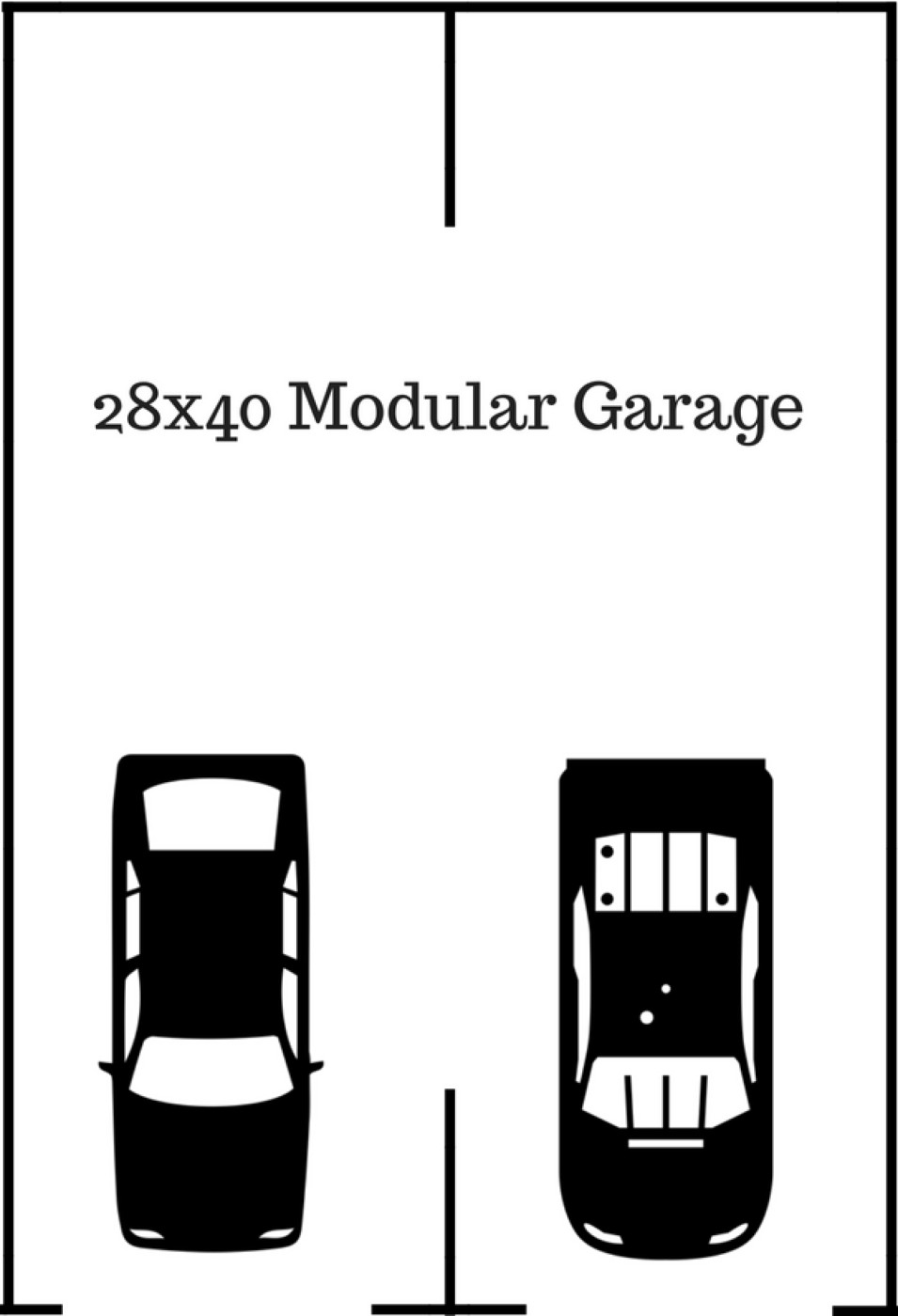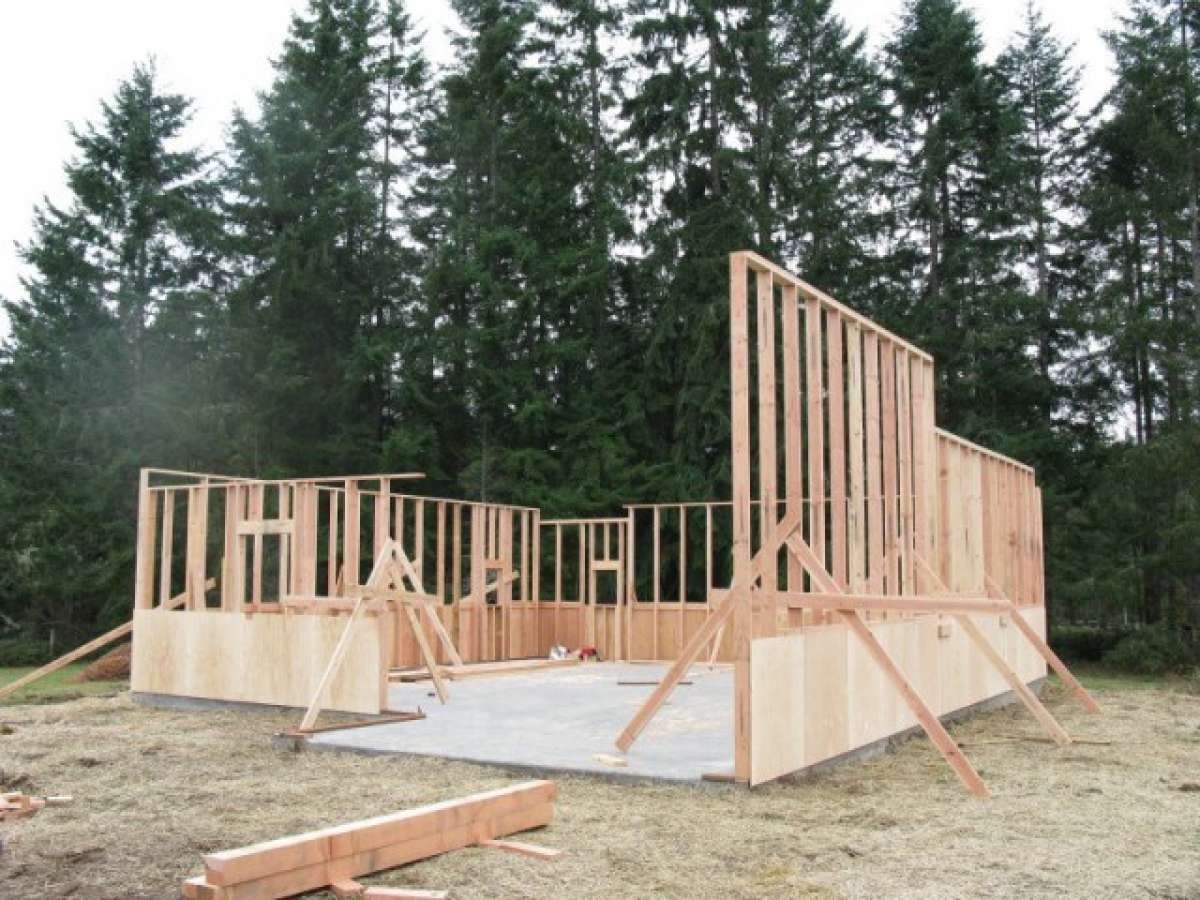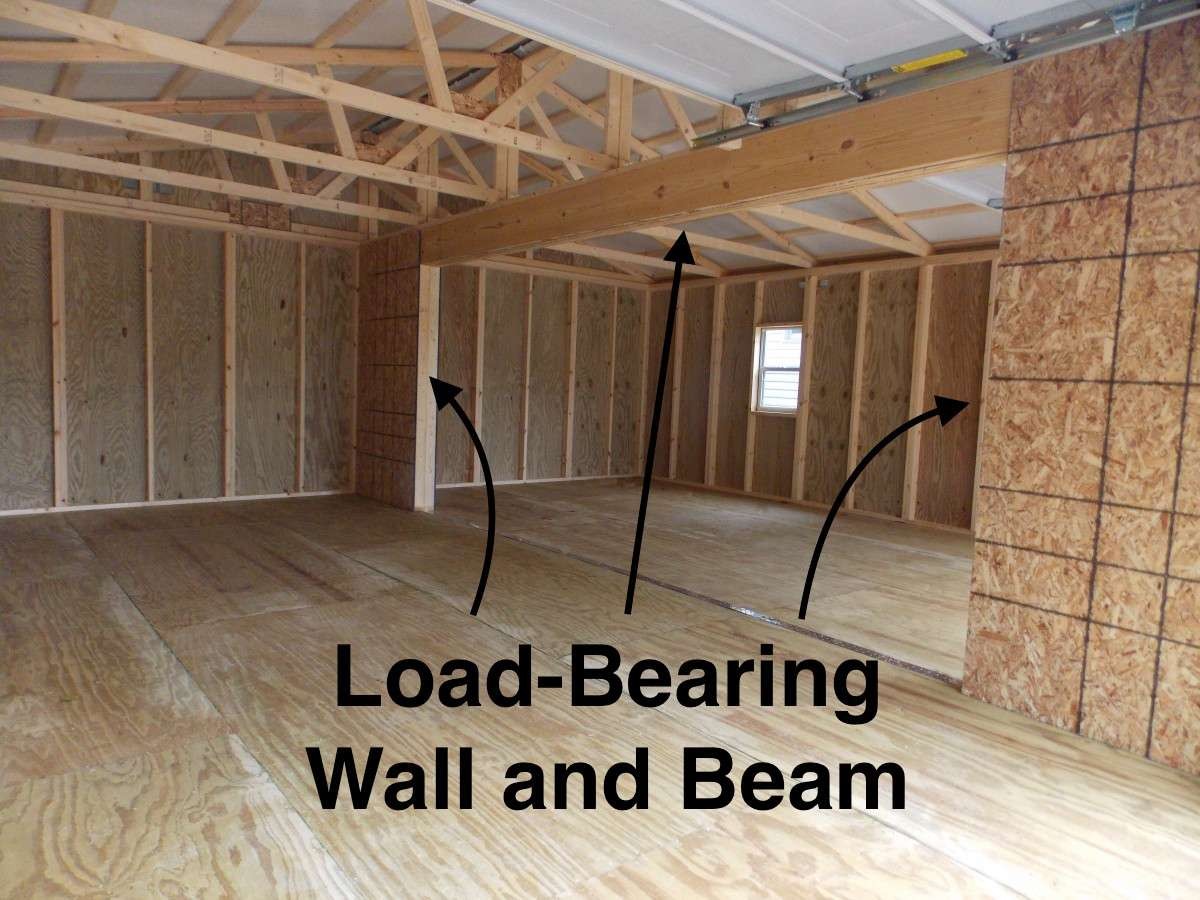How Many Sq Feet In A Two Car Garage is a question many homeowners ask when planning their garage construction or remodel. This comprehensive guide from CARS.EDU.VN explores standard two-car garage dimensions, helping you determine the perfect size for your vehicles and storage needs. Understanding garage size ensures adequate space and maximizes your investment. Let’s explore common garage sizes, space considerations, and factors affecting your garage design choices, like garage storage solutions and typical car sizes.
1. Understanding Two-Car Garage Dimensions
When considering a two-car garage, grasping the typical sizes and how they affect functionality is crucial. The right dimensions ensure comfortable parking, storage, and movement within the garage. Let’s delve into the common measurements for width, length, and wall height:
1.1. Common Width Dimensions
The width of a two-car garage significantly impacts how easily you can park and exit your vehicles.
- Typical Range: Generally, a comfortable width for a two-car garage is between 24 and 28 feet. This width allows enough space to park cars and open doors without bumping into the walls.
- Minimum Width: A 20-foot width might accommodate two cars, but it can feel cramped, especially when trying to maneuver around the vehicles.
- Maximum Width Considerations: Exceeding 28 feet in width can lead to increased shipping costs and structural challenges, particularly with modular garages.
1.2. Common Length Dimensions
The length of your garage determines how much storage space you have beyond just parking your cars.
- Typical Range: The common length for a two-car garage varies from 20 to 40 feet. This range allows for both parking and additional storage or workspace.
- Minimum Length: A length shorter than 20 feet can make parking challenging, especially for larger vehicles.
- Maximum Length Considerations: Lengths beyond 40 feet may present logistical issues for builders, including size and weight challenges during transportation.
1.3. Common Wall Height Dimensions
The wall height contributes to the overall feel of the garage, affecting both aesthetics and practical use.
- Standard Height: A standard wall height for a two-car garage is around 8 feet. This height provides a comfortable overhead clearance without feeling too confined.
- Higher Walls: While higher walls can create a more spacious feel, they might pose problems for modular garages due to transportation height restrictions.
- Height Restrictions: Modular garages must adhere to height limits (typically under 13′ 6″) to clear bridges and overpasses during transport. For higher walls, consider a stick-built or prefab garage.
2. Standard Two-Car Garage Sizes & Square Footage
When planning your two-car garage, understanding standard sizes can help you estimate the square footage and functionality you’ll achieve. Here’s a look at common dimensions and their square footage implications:
2.1. Common Square Footage
The square footage of a standard two-car garage typically ranges from 400 to 800 square feet, providing ample space for parking and storage. Let’s explore some common sizes and their corresponding square footage:
| Size (Width x Length) | Square Footage |
|---|---|
| 20 x 20 ft | 400 sq ft |
| 22 x 22 ft | 484 sq ft |
| 24 x 24 ft | 576 sq ft |
| 24 x 26 ft | 624 sq ft |
| 24 x 28 ft | 672 sq ft |
| 24 x 30 ft | 720 sq ft |
| 24 x 32 ft | 768 sq ft |
| 24 x 36 ft | 864 sq ft |
| 24 x 40 ft | 960 sq ft |





2.2. Smaller Two-Car Garage: 20×20 Dimensions
A 20×20 two-car garage is one of the smaller options available. With a total area of 400 square feet, it provides just enough room to park two vehicles. However, storage space is minimal. This size is suitable if your primary need is simply to protect your cars from the elements.
- Pros:
- Cost-effective due to its smaller size.
- Fits on smaller properties more easily.
- Cons:
- Very limited storage space.
- Can feel cramped when entering and exiting vehicles.
2.3. Standard Two-Car Garage: 24×24 Dimensions
A 24×24 garage offers a good balance between parking and storage space. With 576 square feet, you’ll have more room to maneuver around your cars and store some additional items.
- Pros:
- Adequate space for parking two cars comfortably.
- Some room for storage along the walls.
- Cons:
- May still feel tight if you have larger vehicles or significant storage needs.
2.4. Larger Two-Car Garage: 24×30 Dimensions
A 24×30 garage provides a more generous space with 720 square feet. This size is ideal if you want to include a small workshop area or need extra storage for tools, equipment, and other belongings.
- Pros:
- Plenty of room for parking and storage.
- Allows for a small workshop or hobby area.
- Cons:
- Requires more property space.
- Higher construction costs compared to smaller sizes.
2.5. Extra-Large Two-Car Garage: 28×40 Dimensions
For those needing maximum space, a 28×40 garage offers an expansive 1120 square feet. This size is suitable for homeowners who want a large workshop, extensive storage, or even room for recreational equipment.
- Pros:
- Ample space for all your needs, including parking, storage, and hobbies.
- Can accommodate large vehicles and equipment.
- Cons:
- Most expensive option due to its size.
- Requires a significant amount of property space.
3. Factors Influencing Your Garage Size Choice
Selecting the right size for your two-car garage involves considering several key factors. These include the size of your vehicles, your storage requirements, the dimensions of your property, and any local building codes or regulations. Understanding these aspects will help you make an informed decision that meets your needs and budget.
3.1. Vehicle Sizes
The dimensions of your vehicles are a primary factor in determining the appropriate garage size. Consider the length, width, and height of each vehicle to ensure they fit comfortably with enough room to open doors and move around.
- Compact Cars: Smaller vehicles like sedans or compact cars typically require less space. A garage with dimensions of 20×20 feet may suffice.
- SUVs and Trucks: Larger vehicles such as SUVs and trucks need more room. Opting for a garage size of 24×24 feet or larger is advisable.
- Multiple Vehicles: If you own multiple vehicles, ensure that the garage size can accommodate all of them with adequate space for entry and exit.
Dimensions of Popular Car Models
| Make & Model | Vehicle Type | Length (ft) | Width (ft) | Height (ft) |
|---|---|---|---|---|
| Toyota Corolla | Sedan | 14.5 | 5.8 | 4.7 |
| Honda CR-V | SUV | 15.3 | 6.0 | 5.5 |
| Ford F-150 | Truck | 17.5-20.9 | 6.7 | 6.4-6.5 |
| Tesla Model 3 | Sedan | 15.4 | 6.1 | 4.7 |
| Chevrolet Silverado | Truck | 17.7-21.2 | 6.6 | 6.3-6.5 |
3.2. Storage Needs
Storage requirements significantly impact the ideal garage size. Evaluate what you plan to store in addition to your vehicles, such as tools, equipment, seasonal items, and recreational gear.
- Minimal Storage: If you only need space for a few essential tools and supplies, a standard 24×24 garage might be sufficient.
- Moderate Storage: For storing items like lawn equipment, bicycles, and sports gear, consider a 24×30 garage.
- Extensive Storage: If you require substantial storage space or plan to use the garage as a workshop, an extra-large 28×40 garage is ideal.
3.3. Property Size and Restrictions
The size of your property and any local building restrictions also play a crucial role in determining your garage size.
- Available Space: Assess the dimensions of your property and the space available for the garage. Ensure that the garage size fits comfortably within your property lines without encroaching on setbacks or easements.
- Building Codes: Check local building codes and regulations regarding garage sizes, height restrictions, and required setbacks. These codes can vary by location and may limit the size of your garage.
- Easements and Setbacks: Be aware of any easements or setback requirements on your property, which may restrict where you can build the garage.
3.4. Budget
Your budget will influence the size and type of garage you can build. Smaller garages are generally less expensive than larger ones due to lower material and labor costs.
- Cost Considerations: Factor in the cost of materials, labor, permits, and any additional features, such as insulation, electrical work, and door openers.
- Long-Term Value: Consider the long-term value and potential return on investment when choosing a garage size. A larger, well-built garage can increase your property value and provide added convenience and functionality.
4. Garage Construction Methods
Two-car garages can be built using several different methods, each with its own advantages and considerations. The best method for your garage depends on the size you’re looking for, your budget, and your specific needs. Here are the three main construction methods: stick-built, prefab, and modular.
4.1. Stick-Built Garages
Stick-built garages are constructed entirely on-site from the ground up. This method involves assembling all components, including walls, rafters, and other parts, directly at your property.
- Pros:
- Customization: Offers the most flexibility in terms of design and size, allowing for unique features and modifications.
- Large Sizes: Ideal for garages that are too large or complex to be delivered pre-built.
- Cons:
- Time-Consuming: Construction can take longer compared to other methods due to the on-site assembly.
- Weather Dependent: Construction delays can occur due to weather conditions.
- Higher Cost: Generally more expensive due to increased labor and material costs.
4.2. Prefab Garages
Prefab garages involve prefabricating walls and trusses at a factory and then delivering them to the construction site. A lift or crane is used to set the walls and trusses in place.
- Pros:
- Efficiency: Faster construction time compared to stick-built garages due to factory assembly.
- Quality Control: Factory conditions allow for better quality control over the construction process.
- Customization: Offers some customization options, although not as extensive as stick-built garages.
- Cons:
- Limited Design Flexibility: Fewer design options compared to stick-built garages.
- Transportation Costs: Additional costs for transporting prefabricated components.
4.3. Modular Garages
Modular garages are built in two pieces or halves at a factory, delivered to your property, and then assembled to form a single building. This method often includes a center load-bearing wall with a beam to support the roof.
- Pros:
- Cost-Effective: One of the most affordable garage construction methods.
- Quick Installation: Faster installation compared to stick-built and prefab garages.
- Quality Control: Built in a controlled factory environment, ensuring consistent quality.
- Cons:
- Size Limitations: Typically limited to garages no larger than 32 feet wide and 48 feet long.
- Height Restrictions: Wall heights are usually limited to around 8 feet due to transportation restrictions.
- Design Limitations: Fewer customization options compared to stick-built and prefab garages.
5. Two-Story Garages
Two-story garages offer additional space for storage, work, or even living areas above the parking area. They are a popular choice for homeowners looking to maximize their property’s functionality. Due to height and weight restrictions, two-story garages are typically constructed using stick-built or prefab methods.
5.1. Benefits of a Two-Story Garage
- Extra Space: Provides additional square footage without expanding the footprint of the garage.
- Versatility: Can be used for storage, a workshop, an office, or even a guest suite.
- Increased Property Value: Adds value to your property by increasing the usable space.
5.2. Considerations for Two-Story Garages
- Cost: More expensive than single-story garages due to the additional materials and labor required.
- Building Codes: May be subject to stricter building codes and regulations.
- Accessibility: Requires stairs or an elevator to access the second story, which may not be suitable for everyone.
6. Optimizing Your Garage Layout
Properly optimizing your garage layout can significantly enhance its functionality and usability. Consider these tips to make the most of your garage space:
6.1. Maximize Vertical Storage
Utilizing vertical space can free up valuable floor area for parking and maneuvering.
- Shelving: Install shelving units along the walls to store tools, equipment, and supplies.
- Overhead Racks: Use overhead racks to store seasonal items and bulky objects.
- Wall-Mounted Organizers: Employ wall-mounted organizers for storing small tools and accessories.
6.2. Designate Zones
Dividing your garage into distinct zones can help keep it organized and efficient.
- Parking Zone: Allocate a specific area for parking vehicles.
- Storage Zone: Designate a separate area for storing tools, equipment, and supplies.
- Workshop Zone: Create a dedicated space for working on projects and repairs.
6.3. Optimize Lighting
Adequate lighting is essential for safety and visibility in the garage.
- Overhead Lighting: Install bright overhead lights to illuminate the entire space.
- Task Lighting: Use task lighting to focus on specific work areas.
- Natural Light: Incorporate windows or skylights to maximize natural light.
7. Cost Considerations for Building a Two-Car Garage
Building a two-car garage involves various costs that can significantly impact your budget. Understanding these expenses is crucial for planning and making informed decisions.
7.1. Material Costs
Material costs constitute a significant portion of the overall expense.
- Framing: Costs for lumber, studs, and trusses.
- Siding: Prices for exterior materials like vinyl, wood, or metal.
- Roofing: Expenses for shingles, underlayment, and other roofing components.
- Doors: Costs for garage doors, entry doors, and hardware.
- Windows: Prices for windows and frames.
7.2. Labor Costs
Labor costs depend on the complexity of the project and the contractor’s rates.
- Framing: Charges for constructing the garage frame.
- Siding and Roofing: Costs for installing exterior materials.
- Electrical: Expenses for wiring, outlets, and lighting.
- Plumbing: Charges for any necessary plumbing work.
- Insulation: Costs for insulating walls and ceilings.
7.3. Permit Costs
Permit costs vary depending on local regulations and the scope of the project.
- Building Permit: Fees for obtaining a building permit.
- Electrical Permit: Charges for electrical inspections and approvals.
- Plumbing Permit: Costs for plumbing inspections and approvals.
7.4. Additional Costs
Additional costs can include site preparation, foundation work, and landscaping.
- Site Preparation: Expenses for clearing and grading the land.
- Foundation: Costs for pouring a concrete slab or building a foundation.
- Landscaping: Charges for landscaping around the garage.
- Garage Door Opener: Prices for installing a garage door opener.
- Insulation: Cost to install insulation within the garage.
8. Enhancing Your Garage with Additional Features
Adding extra features to your two-car garage can significantly enhance its functionality, convenience, and overall value. Consider incorporating these enhancements to create a more versatile and enjoyable space.
8.1. Insulation and Climate Control
Insulating your garage and installing climate control systems can make it a comfortable and usable space year-round.
- Insulation: Insulating the walls, ceiling, and doors can help regulate temperature and reduce energy costs.
- Heating: Adding a space heater or a more permanent heating system can keep the garage warm during the winter months.
- Cooling: Installing an air conditioner or a fan can keep the garage cool during the summer months.
8.2. Electrical Upgrades
Upgrading the electrical system in your garage can provide more power and convenience for tools, equipment, and lighting.
- Outlets: Adding more outlets can accommodate a variety of tools and equipment.
- Dedicated Circuits: Installing dedicated circuits can prevent overloading and ensure reliable power for high-demand appliances.
- Lighting: Upgrading the lighting system can improve visibility and safety in the garage.
8.3. Storage Solutions
Incorporating smart storage solutions can help keep your garage organized and clutter-free.
- Shelving Units: Install shelving units along the walls to store tools, equipment, and supplies.
- Overhead Racks: Use overhead racks to store seasonal items and bulky objects.
- Wall-Mounted Organizers: Employ wall-mounted organizers for storing small tools and accessories.
- Cabinets: Adding cabinets with storage is a great way to neatly store all your belongings.
8.4. Workshop Area
Creating a dedicated workshop area can turn your garage into a functional space for DIY projects and repairs.
- Workbench: Set up a sturdy workbench with plenty of surface area for working on projects.
- Tool Storage: Install tool chests, cabinets, and pegboards to keep your tools organized and accessible.
- Task Lighting: Use task lighting to focus on specific work areas.
9. Modular vs. Stick-Built vs. Prefab Garages
Choosing between modular, stick-built, and prefab garages depends on your budget, timeline, and customization needs.
Comparison Table of Garage Types
| Feature | Modular Garage | Stick-Built Garage | Prefab Garage |
|---|---|---|---|
| Cost | More affordable | More expensive | Mid-range |
| Construction Time | Faster | Slower | Moderate |
| Customization | Limited | Extensive | Moderate |
| Size Limitations | Yes (typically up to 32′ x 48′) | No | Few |
| Quality Control | High (factory-built) | Variable (dependent on contractor) | High (factory-built components) |
| Transportation | Delivered in sections and assembled on-site | Built entirely on-site | Components delivered and assembled on-site |
10. Frequently Asked Questions About Two-Car Garages
Here are some frequently asked questions to help you better understand two-car garages.
10.1. What is the smallest size for a two-car garage?
The smallest practical size for a two-car garage is typically around 20×20 feet (400 square feet). This size allows enough room to park two small vehicles but offers minimal storage space.
10.2. What is the average size of a two-car garage?
The average size of a two-car garage is around 24×24 feet (576 square feet). This size provides adequate space for parking two vehicles comfortably and some additional storage.
10.3. How much does it cost to build a two-car garage?
The cost to build a two-car garage can vary widely depending on factors such as size, materials, and construction method. On average, you can expect to pay anywhere from $20,000 to $50,000 or more.
10.4. What are the benefits of a larger two-car garage?
A larger two-car garage offers several benefits, including more space for parking larger vehicles, ample storage for tools and equipment, and the flexibility to create a workshop or hobby area.
10.5. What is the ideal wall height for a two-car garage?
The ideal wall height for a two-car garage is typically around 8 feet. This height provides a comfortable overhead clearance without feeling too confined.
10.6. Can I build a two-car garage on a small property?
Yes, you can build a two-car garage on a small property, but you may need to choose a smaller size or consider a design that maximizes space efficiency, such as a two-story garage.
10.7. What are the building code requirements for a two-car garage?
Building code requirements for a two-car garage can vary depending on local regulations. Common requirements include minimum setback distances, maximum height restrictions, and structural integrity standards.
10.8. How can I maximize storage space in my two-car garage?
You can maximize storage space in your two-car garage by utilizing vertical space with shelving units, overhead racks, and wall-mounted organizers.
10.9. What are the different types of garage doors available?
There are several types of garage doors available, including sectional doors, roll-up doors, and swing-out doors. The best type for your garage depends on factors such as space constraints, budget, and aesthetic preferences.
10.10. Should I insulate my two-car garage?
Insulating your two-car garage can provide several benefits, including temperature regulation, energy savings, and noise reduction. If you plan to spend a lot of time in your garage or use it as a workshop, insulation is highly recommended.
Conclusion
Choosing the right size for your two-car garage involves considering various factors, including vehicle sizes, storage needs, property dimensions, and budget. By carefully evaluating these aspects, you can select a garage size that meets your specific needs and provides years of enjoyment and functionality. Remember, CARS.EDU.VN is here to assist you with all your automotive and garage-related questions.
Do you need help finding the right garage for your needs? Are you looking for reliable information on garage maintenance, repairs, or modifications? Visit CARS.EDU.VN today to explore our comprehensive resources and expert advice. Our team is dedicated to providing you with the knowledge and support you need to make informed decisions about your garage and automotive needs.
Contact us at:
Address: 456 Auto Drive, Anytown, CA 90210, United States
Whatsapp: +1 555-123-4567
Website: cars.edu.vn